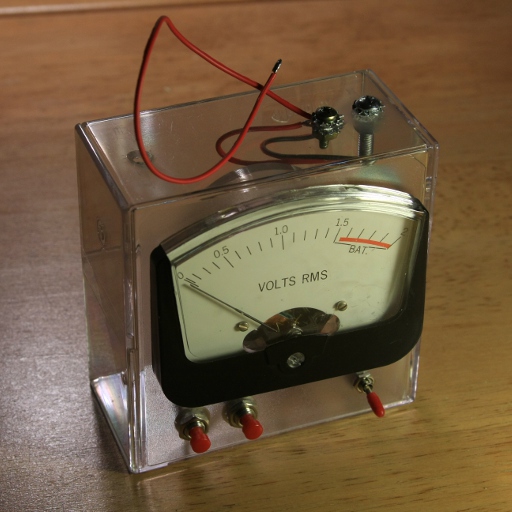| Simple Battery Tester | ||||||||
| Main | Schematics & Construction | >>> Other Projects | ||||||
| If you are anything like me, there are lots of batteries in various stages of discharge gathering dust around your home.
This is a very simple DIY battery tester that can help you figure out which battery could be used a bit more, and which one should be delivered on balistic trajectory to the recycle bin.
How it works The simplest way to test a battery is to just check the voltage - usually everything below 90% of the nominal is considered unusable. This test, however, is not very accurate - some batteries might show a good voltage when left alone, but voltage might drop significantly under even a small load current. The opposite is also true sometimes - a rechargeable battery may look dead but may revive after a couple of recharge/discharge cycles. The tester lets you measure the standalone battery voltage and then the same voltage but with a 10 Ohm load. After several measurements of dead and good batteries you will have a pretty good idea what is normal and what is not. The tester has a switch for selecting one of two voltage ranges, allowing it to test anything from 1.2V to 12V batteries. After selecting the voltage range, connect the battery, and take a reading with or without a load. The load is applied by pressing a button. (In fact, I had planned for two buttons applying different loads, but it turned out that the 10 Ohm resistor works well enough and now one of the buttons sits unconnected - until I figure out what to do with it). Go to the Schematics & Construction page for details on building the tester. |
 |
|
| [ Next page ] |
| Main | Schematics & Construction | >>> Other Projects | ||||||
 | ||||||||